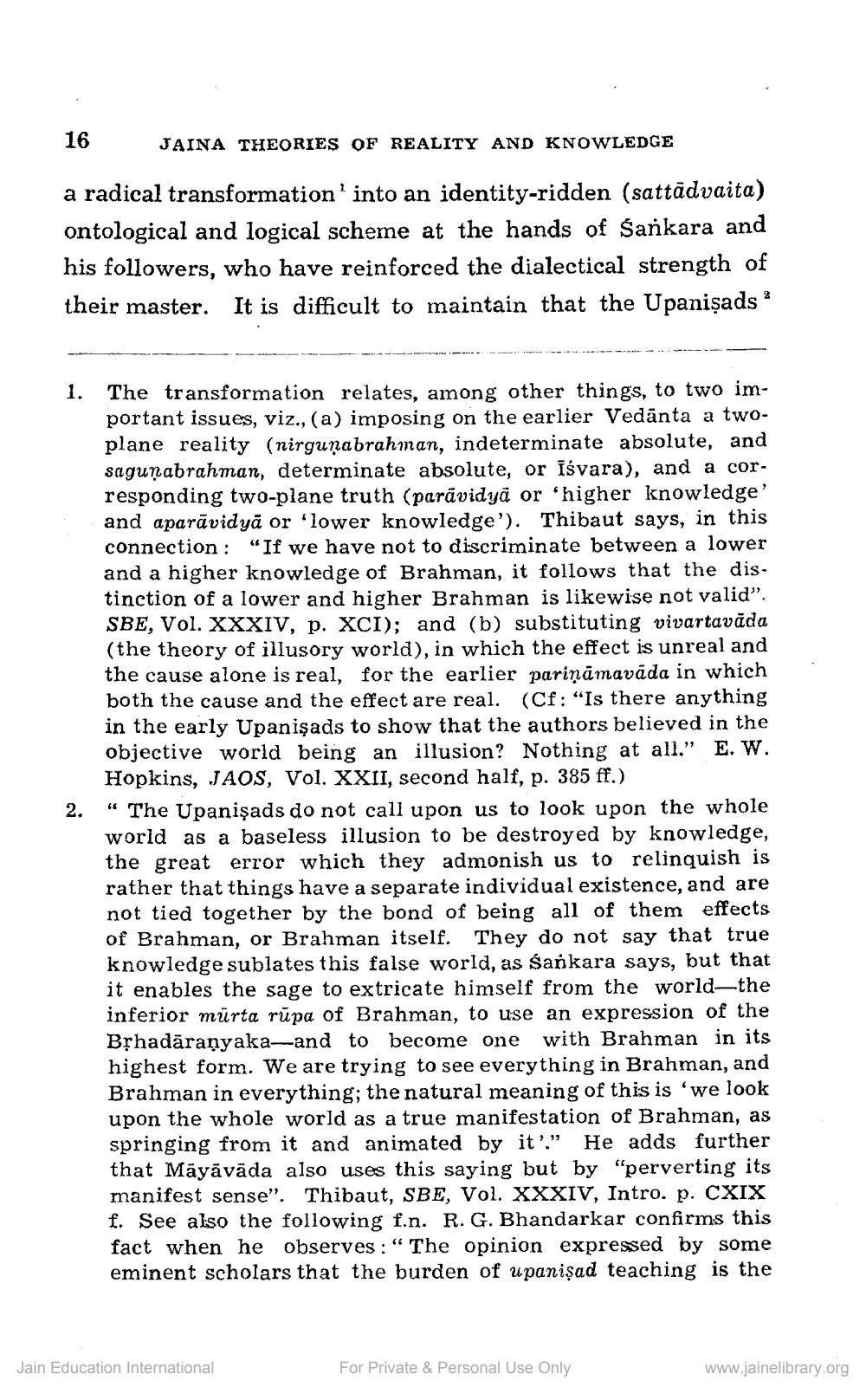________________
16
JAINA THEORIES OF REALITY AND KNOWLEDGE
a radical transformation into an identity-ridden (sattādvaita) ontological and logical scheme at the hands of Sankara and his followers, who have reinforced the dialectical strength of their master. It is difficult to maintain that the Upanişads 2
The transformation relates, among other things, to two important issues, viz., (a) imposing on the earlier Vedānta a twoplane reality (nirgunabrahman, indeterminate absolute, and sagunabrahman, determinate absolute, or īśvara), and a corresponding two-plane truth (parāvidya or "higher knowledge' and aparāvidyā or 'lower knowledge'). Thibaut says, in this connection: “If we have not to discriminate between a lower and a higher knowledge of Brahman, it follows that the distinction of a lower and higher Brahman is likewise not valid". SBE, Vol. XXXIV, p. XCI); and (b) substituting vivartavāda (the theory of illusory world), in which the effect is unreal and the cause alone is real, for the earlier parināmavāda in which both the cause and the effect are real. (Cf: "Is there anything in the early Upanişads to show that the authors believed in the objective world being an illusion? Nothing at all.” E. W. Hopkins, JAOS, Vol. XXII, second half, p. 385 ff.) "The Upanişads do not call upon us to look upon the whole world as a baseless illusion to be destroyed by knowledge, the great error which they admonish us to relinquish is rather that things have a separate individual existence, and are not tied together by the bond of being all of them effects of Brahman, or Brahman itself. They do not say that true knowledge sublates this false world, as Sankara says, but that it enables the sage to extricate himself from the world—the inferior mūrta rūpa of Brahman, to use an expression of the Bșhadāraṇyaka-and to become one with Brahman in its highest form. We are trying to see everything in Brahman, and Brahman in everything; the natural meaning of this is 'we look upon the whole world as a true manifestation of Brahman, as springing from it and animated by it." He adds further that Māyāväda also uses this saying but by "perverting its manifest sense". Thibaut, SBE, Vol. XXXIV, Intro. p. CXIX f. See also the following f.n. R. G. Bhandarkar confirms this fact when he observes : " The opinion expressed by some eminent scholars that the burden of upanişad teaching is the
Jain Education International
For Private & Personal Use Only
www.jainelibrary.org




